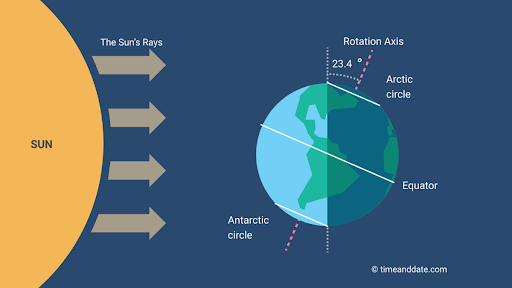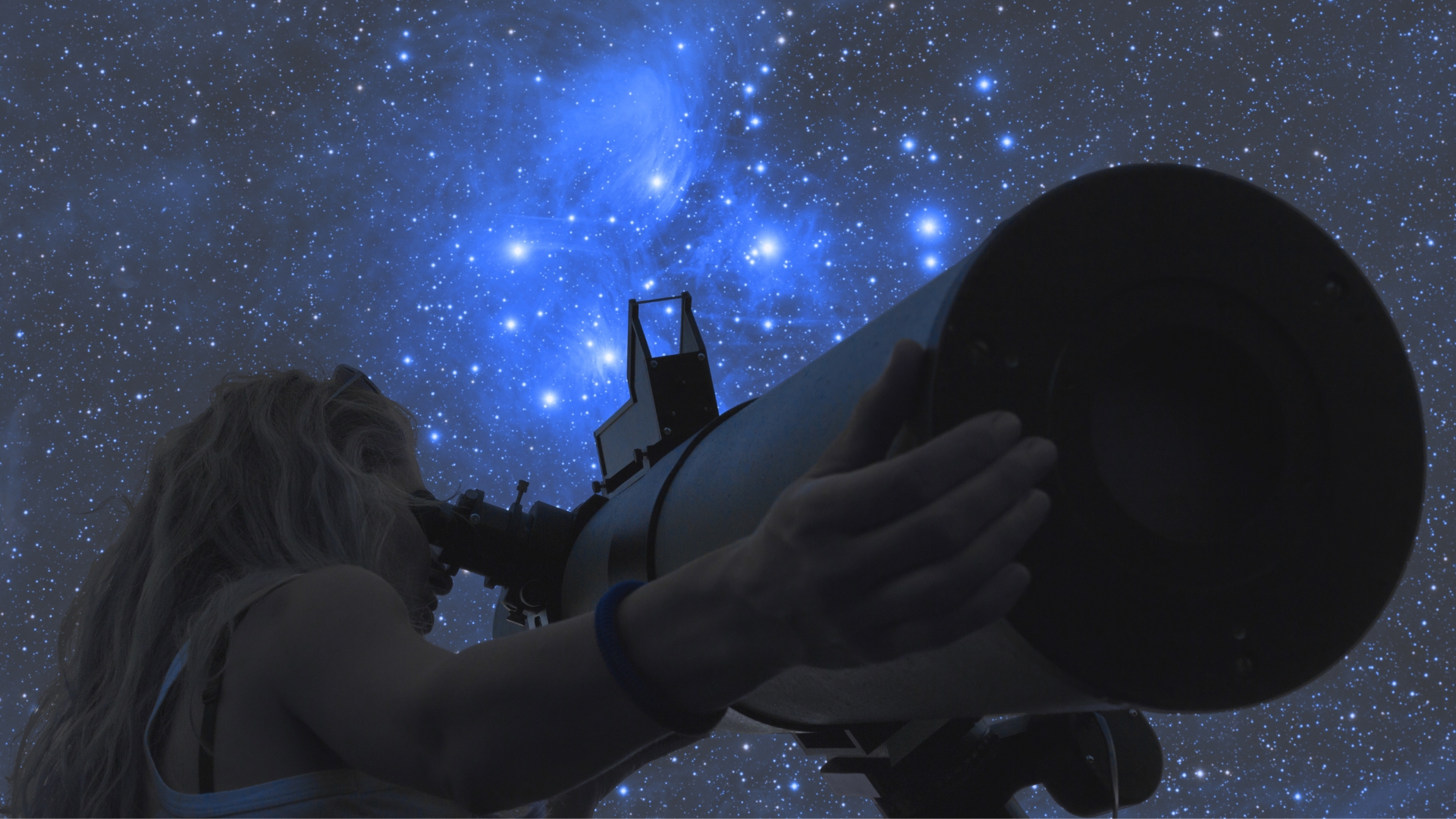Winter Solstice: When the Longest Night Brings Hope
Winter nights hold a special place in my life as a stargazing expert. Standing outside under open skies, wrapped in warm layers, beside the telescope, I guide people as they[…]
by Abhishek Stargazing Expert
May 04, 2024

Speaking of the search for extraterrestrial life, the celestial body currently under the spotlight is one of the Galilean moons, namely Europa. Who would have thought that even a small moon could potentially harbor life? That’s the wonder of our universe, after all. If we didn’t periodically investigate it, we would never learn about it. In this blog, we will be discussing this natural satellite of Jupiter, its mythological story, its features, the space missions and research conducted regarding this celestial body, and what its future fate might be.
Journey to the stars with us as we cast our gaze upon Europa, a celestial marvel nestled among the Galilean Moons of Jupiter. Though it may be the most petite in that heavenly quartet, Europa stands proudly as the sixth-largest moon in our solar system, a testament to its grandeur. Discovered by the visionary astronomers Galileo Galilei and Simon Marius on a winter’s night in 1610, this icy orb was once known simply as Jupiter II. But fate, and a dash of scholarly rivalry, bestowed upon it a name rich with ancient allure—Europa, named for a Phoenician princess of Greek lore.
Characteristics
Enter the cosmic arena, where Jupiter’s mysterious moon Europa is doing a heavenly waltz around it. This moon, which is made of silicate rock and has a shimmering water-ice crust, suggests that it might have an iron-nickel core. Its atmosphere is as thin as a whisper against the vastness of space—a thin layer of oxygen. View the surface of Europa, a young face with hardly any impact craters visible, a white-beige tapestry furnished with light streaks. Europa is the smoothest sphere in the solar system; its immaculate exterior prompts the question of whether there is an ocean beneath it, a secret domain that may perhaps harbor extraterrestrial life.
A single revolution around its massive partner takes roughly 3.5 Earth days to complete. Europa, perpetually trapped in a tidal embrace with its parent planet, creates a sub-Jovian point in the sky where Jupiter watches over us from the zenith, a permanent, menacing presence. This dance between gravity and light reveals a world of wonder, a moon that may hold the secrets to extraterrestrial life.
Digging the Past
The myth of Europa sparkles in the fabric of tales that cover our night sky, telling the story of celestial destiny and divine love. Europa was once a princess of the Phoenician Kingdom, so beautiful that people traveled great distances to see her brilliance. Zeus, the king of gods, saw her on a fateful day on the seashore. He was struck by an arrow of eternal attraction, which was actually a plot of his own devising involving Cupid, the god of love. Transforming into a majestic white bull with his shape-shifting prowess, Zeus mingled with the herd overseen by Europa’s father.
Amongst the bulls, one stood out with a calmness and regality that captivated Europa. Little did she know, this was Zeus in disguise. Their mutual affection blossomed, and together they fled across the sea to Crete, where Zeus revealed his true form and crowned Europa as the queen of the land. These moonlit dreams of a god and a mortal are captured in paradise above. Since one of Jupiter’s moons is similar to Europa in relation to Zeus, the moon Europa, named after their fabled love by astronomer Simon Marius, presently orbits Jupiter as a continual reminder of the romance that once transcended the boundaries of Earth and Olympus
What’s the deal with Europa?
Imagine a world where the potential for life whispers from beneath a shell of ice, where the dance of cosmic forces crafts an environment unlike any other. This is Europa, Jupiter’s moon, akin to Saturn’s Enceladus, both celestial bodies that tantalize us with the possibility of hidden organisms. The secret lies in their cryovolcanic activities and tidal flexing, geological ballets that could nurture life in the dark depths below. The Cryovolcanic Activities seen on the surface of Europa are similar to that of Enceladus, one of the Saturn Moons.
In addition to this, Europa is enveloped by a tenuous atmosphere predominantly composed of oxygen. Unlike Earth, where oxygen is generated biologically via photosynthesis, Europa’s oxygen arises from a non-biological process known as radiolysis. This process entails the dissociation of water vapor molecules into oxygen and hydrogen when exposed to intense radiation. Europa’s icy surface, when traversing through Jupiter’s powerful magnetosphere, encounters charged particles.
These particles bombard the surface, leading to the release of hydrogen atoms from their vapor state. Due to hydrogen’s lightweight nature, it escapes into space, leaving behind oxygen atoms. These residual oxygen atoms accumulate to form the moon’s thin atmosphere. The creation of this atmosphere is a complex phenomenon, involving intricate mathematical and physical interactions beneath Europa’s icy crust.
Space Missions
There is a long history of investigation of Europa, one of Jupiter’s fascinating moons. Pioneer 10 and 11 offered the first low-resolution photos of its surface in 1973 and 1974. Later, more precise images of Europa’s frozen landscape were provided by the Voyager 2 mission. More recently, the European Space Agency’s JUICE mission, which was launched in 2023, briefly touched down on Europa; however, its main objective was Ganymede, which is expected to reach the Jovian system by July 2031.
NASA’s Europa Clipper mission, which is devoted entirely to studying Europa, is set to launch in October, marking a momentous occasion. The Europa Clipper, in contrast to conventional orbiters, will circle Jupiter and conduct 45 low-altitude flybys of Europa to collect comprehensive data. Due to its frozen surface, which is marked by tall, sharp ice spikes, landing on Europa presents significant hurdles that would be impossible to overcome with existing technology.
Conclusion
The ongoing research in the quest for extraterrestrial life may not have yielded the breakthroughs we often hope for as laypeople. However, it has underscored a compelling notion: Earth is not the sole celestial body with the potential to harbor life. There are numerous other entities within our Solar System alone. Expanding our perspective to our galaxy, the local group, and the entire universe, it seems less likely that we are alone in the vast cosmos.
With our current limited knowledge, we cannot definitively say we are not alone. Yet, science demands evidence; without concrete proof, any claim remains theoretical. At this moment, in the absence of evidence of life beyond Earth, we might stand alone. The future, however, is unwritten. Only through relentless research and space missions can we hope to find answers to this profound question.





Winter nights hold a special place in my life as a stargazing expert. Standing outside under open skies, wrapped in warm layers, beside the telescope, I guide people as they[…]
The discovery of celestial bodies near Earth often sparks excitement, curiosity, and sometimes even confusion about the possibility of a second moon. One such recent discovery, 2024 PT5, has reignited[…]
Introduction Comets have long captivated our imaginations, and this October, skywatchers are in for a treat with the appearance of C/2023 A3 (Tsuchinshan-ATLAS). This remarkable icy visitor from the outer[…]
To: The Universal Galactic Council From: Planet Earth, Number third from the Sun [caption id="attachment_3885" align="alignnone" width="300"] Credit- istock[/caption] Dear Esteemed Members of the Council, I hope this letter finds[…]
Get exclusive access to freebies and news. We don’t spam, rent or sell your email. See our Privacy Policy.